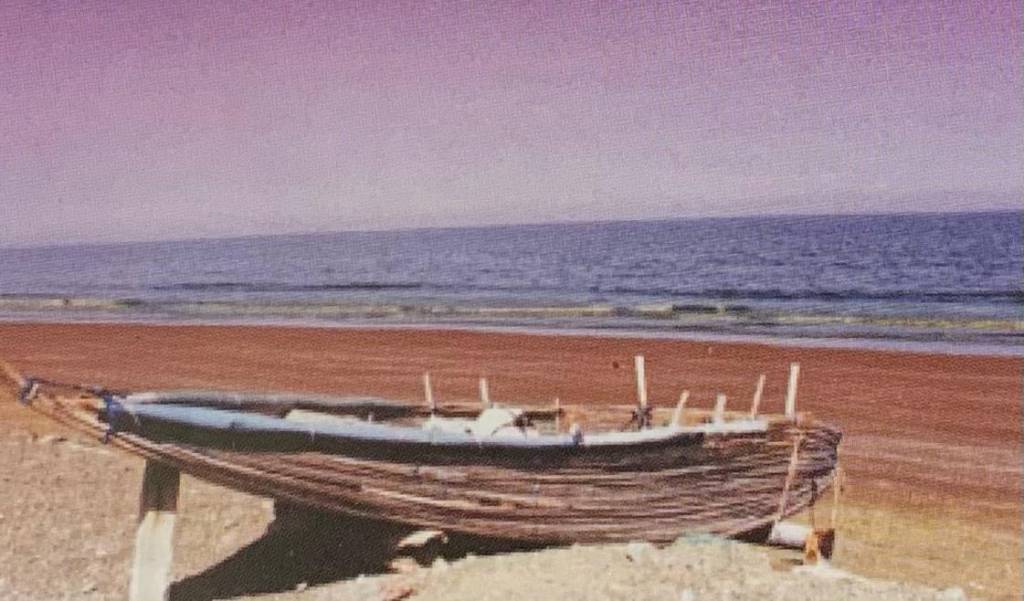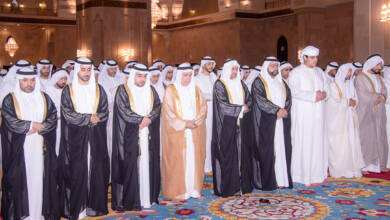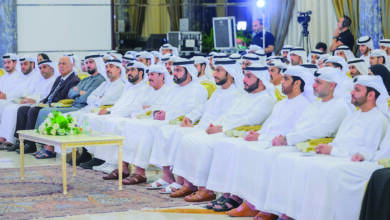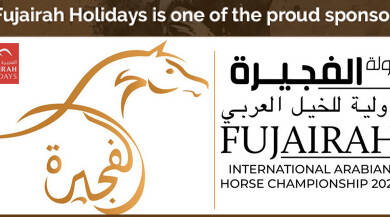The Shasha: Traditional fishing craft of the United Arab Emirate’s East Coast
An interview with Abdullah Mohammed Sulaiman:
Translation by Naser Ali Tajalli and Sheikh Abdullah Suhail al Sharqi.
The Emirate of Fujairah, on the Gulf of Oman (Batinah) coast of the United Arab Emirates, still retains numerous traditions now less common in the larger emirates due to the rapid development which has taken place in the country over the past three decades. It is reasonable to assume, however, that it is only a matter of time before much of the traditional knowledge and expertise developed disappears. The construction and us of the small fishing boat built of bound bundles of palm fronds known as the shasha (pl.,shoosh) represents one of these traditional aspects.
One of the few remaining shasha builders in Fujairah is Abdullah Mohammed Sulaiman. At the age of four he was introduced to the art of shasha building by his father, and is now trying to pass on his knowledge to his sons. In view of the current development process however, including the introduction of fiberglass boats and the mechanization of the fishing industry, he doubts that his sons will follow his footsteps.
The Shasha:

Ninety percent of the material necessary for building these boats is obtainable from the date palm tree Phoenix dactylifera. The remaining material is gathered from trees located in the mountains of Fujairah, such as the Zizyphus and Acacia. The long fronds of the date palm are prepared by removing the leaves and soaking the stems which will make them pliable and manageable. These stems are tied together securely with a rope made from the date palm. Today nylon rope is often substituted for the original date palm rope.
The base layer of stems is bound tightly and is secured by a frame made of wood from the Zizyphus and Acacia Tree. This frame contains seven cross beams along the base with corresponding beams on either side if the boast. The large section of the date palm stem which is attached to the truck (ie., the branch stumps) was originally used to create buoyancy. Today, however, Styrofoam is generally used. These segments are bound together with date palm rope and secured above the base of the stems.
Above this are placed another seven cross beams and a layer of tightly bound stems. The sides of the shasha are also constructed with tightly bound date palm stems. All of the cross beams and stems are secured with date pal rope. The date palm stems were once also used to construct the fishing cages known as gargour, (pl.,garagir) which are now made of metal.
In the past, fishing trips from Fujairah to the Omani town of Sohar, further south along the Batinah Coast, were occasionally made. These could last anywhere between 15 days and a month. For more extensive journeys, for the purpose of coastal trading for example, large sailing ships like the Al Baggara, made on the Persian coast of wooden planks sewn together with ropes, were used.
Shoosh have been an integral part of the lifestyle and coastal economy practiced along Fujairah’s coastline for at least a century. They display traditional local skills and craftsmanship, and an understanding of the raw materials available on the UAE’s East Coast.
Note: This article was originally published in the Bulletin of the Emirates Natural History Group has kindly permitted the use of the article in Fujairah Observer.





